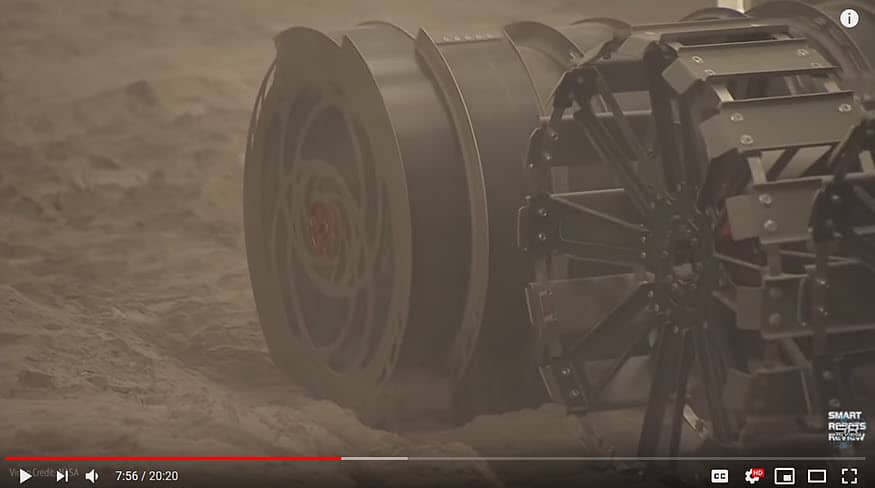Elmo Intelligent Motion Control Technologies, a designer of servo drives, advanced network motion controllers & complete motion control solutions for motors, develops motion control solutions for a vast range of modern applications. By combining control algorithms with digital hardware, Elmo’s servo drives and motion controllers minimize a machine’s complexity while maximizing its efficiency and rate of production. This means more powerful machines available in smaller and more lightweight packages, ideal for space exploration as well as a vast range of terrestrial applications.
Why NASA chose Elmo servo drives?
NASA selected the miniature servo drives from Elmo Intelligent Motion Control Technologies to power all 10 axes of the NASA RASSOR, a lunar excavator prototype.
The primary factors in which NASA was interested were highly accurate position control for arm joints and responsive speed control for the collection drums. As the RASSOR was designed to be a much more industrious model than previous space rovers, NASA also required durable hardware with the ability to endure heavy loads and sudden impact.
NASA RASSOR robot overview
The NASA RASSOR (pronounced “Razor”) stands for Regolith Advanced Surface Systems Operations Robot. It looks like a small tank, with a chassis seated on tracks and a drum at each end, attached to the chassis with movable arms. The arms help the RASSOR complete its tasks and also allow the robot to “step” or “climb” over obstacles, drastically improving its mobility. It’s approximately 2.5 ft fall when positioned vertically and weighs around 100 pounds. It averages a speed of 20 cm per second, which is much faster than its forerunners, and up to five times faster than the Curiosity Mars rover.
The NASA RASSOR a lunar robot prototype designed to collect soil from the surface of the moon. While previous rovers were slow-moving and fragile, equipped with delicate tools and scientific gear, the RASSOR is more industrial. It’s built to withstand demanding labor, working up to 16 hours per day, every day, for several years.
The robot uses drum excavators on either side of the chassis to collect up to 40 pounds of soil per trip. The RASSOR also has powerful arms mounted on either side designed to flip itself over by launching it off the ground and clearing its tracks of debris so it can continue moving.
Once the soil is collected, the RASSOR will deliver it to a processing plant where the lunar soil will be broken down using chemicals and converted into rocket fuel, water, or even oxygen for the astronauts who are working there.
The RASSOR excavator design has the unique capability to stand up vertically, allowing it to dump the soil into a bin without the use of a ramp. Without the need for a dump bin on board, the robot can shed excess weight, reducing its complexity and maximizing its mobility. This type of local resource usage, called Extraterrestrial In Situ Resource Utilization (ISRU), has the potential to drastically cut the high cost of fuel associated with launching rockets.
The scalable design of the NASA RASSOR means it can be used for different jobs depending on its size. While smaller-size models are ideal for a space mission, a larger-size model could be used on earth for mining materials that pose a risk to human health or sites where gaining access is difficult or dangerous.
Elmo servo drives were selected to power all 10 axes of the robot
One of the challenges presented by space exploration is the problem of gravity and lack thereof. The RASSOR has to be light enough to be transported by rocket, but heavy enough to successfully collect soil samples in an environment where gravity is much lower than that of Earth.
To address this issue, RASSOR uses digging bucket drums located at either end of the chassis that rotate in opposite directions, each providing the other with added traction, allowing them both to penetrate the surface.
Elmo’s servo drives allow the NASA RASSOR the power and efficiency necessary to perform these tasks.

